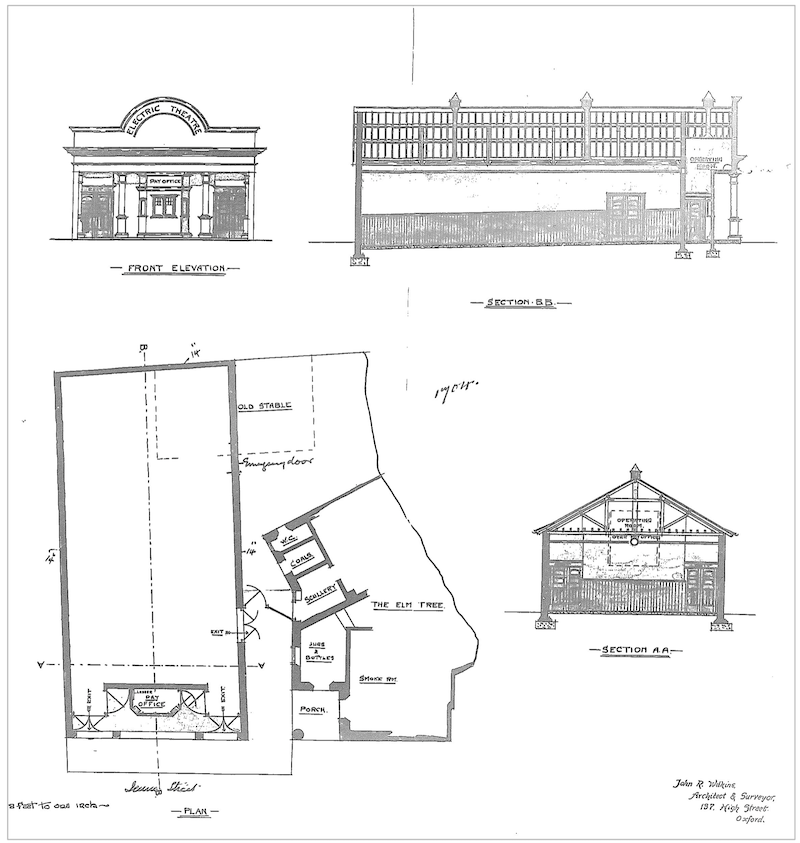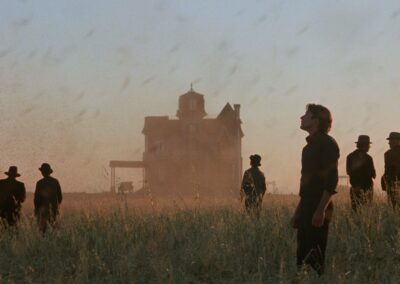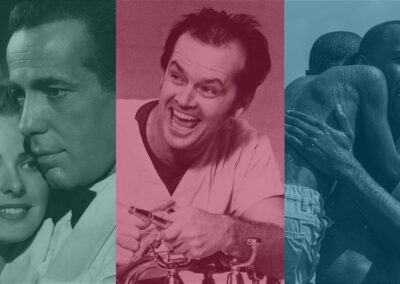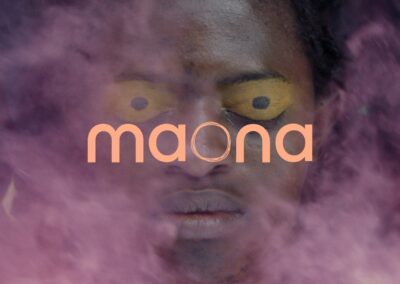The Ultimate Picture Palace opened in 1911 as the Oxford Picture Palace, the city’s first purpose-built cinema, at a time when this was a hugely exciting and popular new form of entertainment. In this blog cinema volunteer and local historian Liz Woolley writes about that fateful year in which the UPP opened it’s doors to the public.
The story of British cinema goes back to February 1896 when Louis and August Lumière brought their cinématographe projector to London. Only seven months later, a burlesque show at the New Theatre in George Street in Oxford, The Gay Princess, included the city’s first appearance of “The novelty of 1896, the Cinamatoscope, the photo-electric sensation of the age”.
Meanwhile, ‘living pictures’ were being shown in mobile bioscope booths at travelling fairs, and the first in Oxford was at St Giles’s Fair in September 1898. Customers paid 3d entrance fee (about £1 in today’s money) and waited in silence and tense anticipation in the hot, dark and crowded tent for the show to begin. At last “the curtains fell and a movement of machinery started these wonderful pictures…”. The performance included Fire Brigades at Blenheim, followed by a ‘farcical patriotic fight on ramparts’, and then “after a moment’s wait” footage of former Prime Minister William Gladstone’s funeral procession outside Westminster Abbey. One audience member reported that “the wonder of the thing held me marvelling … at the art that can give us such vivid pictures of past events”.
In 1906 Frank Stuart, an experienced theatrical manager, took on the licence of the Empire Theatre of Varieties on the Cowley Road [now the Old Music Hall, almost opposite the UPP]. Music hall shows, with animated pictures as part of the programme, had been presented here since 1900 by the previous manager, pioneer theatre proprietor and cinema developer Albany Ward. Frank Stuart renamed the building the East Oxford Theatre and continued to stage variety shows which included animated pictures. The popularity of these must have convinced Stuart that the future lay in ‘the movies’ and in November 1910 he opened Oxford’s first cinema, the Oxford Electric Theatre, in a former public wash-house on Castle Street.
Stuart was something of an entertainment entrepreneur, and he was also the landlord of the Elm Tree pub, opposite his Empire Theatre on the Cowley Road. In September 1910 he put forward plans for a new purpose-built ‘electric theatre’ on land immediately to the west of the pub, with its entrance on Jeune Street. This site had previously been the Elm Tree Brewery’s stable yard [the stables themselves are still in existence, to the west of the UPP, now occupied by a tyre depot]. The cinema was to be called the Oxford Picture Palace, now the UPP.

John R Wilkins’s plans for the Oxford Picture Palace, Jeune Street, September 1910.
The designer of the cinema was a well-known local architect, JR Wilkins. The builders were TH Kingerlee & Sons, who had already built all the houses on Jeune Street and the Wesley Hall Methodist church and schoolroom on the corner with the Cowley Road. The design of the cinema made reference to the old travelling shows, with an attractive ornamented and pillared frontage, containing a central box office flanked by two entrance and exit doors. Behind this was a plain brick-built hall, in place of the tented enclosure of the fairground bioscope booths.
The interior was painted red and white, with a wooden parquet floor and an “equable temperature, without draughts” maintained by six radiators. In order to maximise capacity – the cinema could seat 400 – there were no toilet facilities on site, but a side door gave access to the lavatories of the adjacent Elm Tree pub (also run by Frank Stuart). The single projector was enclosed in a steel and concrete fireproof chamber or ‘box’, separated from the main auditorium, as required by the Cinematograph Act which had come into force in 1910 following a number of disastrous fires (nitrate film being highly flammable). The projection room was reached by a narrow metal ladder at the back of the ticket office, which is still in use today.

The Oxford Picture Palace was built and fitted out in only four months and the first showing, on the afternoon of Friday 24 February 1911, was a private screening of a popular cowboy film The Bad Man and the Minister. The next day the cinema opened to the public, with tip-up fauteuil [upholstered] seats at 1 shilling, cheaper seats at 6d and 3d, and a programme of ‘topical’, ‘humorous’ and ‘melodramatic’ films, all “frank and wholesome and above-board”. The programme changed three times a week; there were three shows every evening, each show lasting about an hour, and two matinees for children on Saturday afternoons. There would be at least four short breaks in every show whilst the projectionist changed the reel, as due to the high combustibility of nitrate, each reel could hold only 12 to15 minutes of film. Newsreels were an important part of the programme and films were shared between the Picture Palace and what had been the Empire Theatre opposite, which had, in 1912, become the Palace Cinema.
Cinema proved hugely popular and within a few years several more cinemas were built in Oxford. The only other survivor from that early period is the North Oxford Kinema in Jericho, now the Phoenix Picturehouse, which celebrated its centenary in 2013.
Find out more about the history of the Oxford Picture Palace (now the UPP) in:
- The Ultimate Survivor by Ian Meyrick (Mercia Cinema Histories, 2011)
- Early Oxford Picture Palaces by Paul J Marriott (1978)
Watch footage of Gladstone’s funeral here: https://player.bfi.org.uk/free/film/watch-gladstones-funeral-entering-westminster-abbey-1898-online
Liz Woolley, January 2021; www.lizwoolley.co.uk


